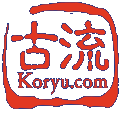Q: Does anyone know why the Aikikai calls their highest teaching title shihan and the ZNKR (kendo federation) call it hanshi?
A: Both words mean teacher, but are not a reversal of the same characters. The “han” is the same, meaning an example, model or pattern. The “shi” in shihan means teacher or master. The “shi” that’s used in hanshi means (gentle)man, samurai or warrior, or scholar.
Incidently, whereas Ueshiba-style aiki folk often refer to Ueshiba Morihei as O-Sensei (I think he was about 1/256th Irish), judoka use the form Kano Shihan. Of course, they’ll call other teachers shihan, too, but they only use the word as a title in Kano Jigoro’s case.
Finally, a little piece of data about the term O-Sensei. Many aikidoka of the Ueshiba persuasion (and I’m one, too, so don’t get your sensibilities twisted into a knot) seem to think of it as referring *only* to Ueshiba Morihei sensei. Nope. That’s just not the case.
It’s only a term implying a great deal of respect and I can think of a couple folk in recent memory for whom the term is/was also used. Two of ’em are alive today. So, one guy’s O-Sensei is just another fellow’s Joe Shlabotnick. Not a big deal but, technically the precise way to say it would be, “Ueshiba O-Sensei” meaning the the founder of Aikido–to differentiate him from, say, “Kato O-Sensei” (the 21st headmaster of Tatsumi-ryu) or “Sakagami O-Sensei” (the late headmaster of Itosu-ryu); also to differentiate him from his son, the second Doshu (Kisshomaru S.) and his grandson, Moriteru, the current Aikikai Hombu Dojo-cho. They’re both Ueshiba Sensei, so it can be a little hard to know which one someone’s talking about out of context. Not a big deal, just a little more information…
Q: So shihan denotes a master teacher, a model for the art, while hanshi implies a model person, an exemplary life. Is that essentially correct? Any guesses about why the differences in usage?
A: As far as the differences in usage go, shihan is just a word that means, roughly speaking, an exemplar, a master or master teacher. Sensei means teacher, too, though it is also used for people who are physicians, dentists, even lawyers and politicians. To connote university-level teachers, speaking about them indirectly the word kyoju is usually used for a full professor, and jokyoju for an associate professor. I don’t know if there’s an equivalent to the position of assistant professor in Japanese universities, A full-time, accredited teacher at a high school is a kyoyu. A university or high school instructor is called a koshi (meaning somebody who works part-time and is not tenured), but the term for instructor in budo is shidoin and, for assistant instructor, fuku shidoin.
Hanshi, and the lower level titles, kyoshi and renshi, are what are known as shogo, teaching titles or degrees. As I understand it, they are considered more a recognition of one’s time in/contribution to the art (whichever that is) and less an indication of technical ability. That’s what the dan-i, “grade” or “rank” (see following paragraph) is for/about. This appears to be true for all of the weapons arts: iai, jo, juken, ken, tanken, naginata, and yumi. I’m not too sure what “the” situation is in karatedo, since there’re so many different organizations. Some award shogo and some do not. I don’t think ZenKuRen gives out shogo now, rather that it’s a function of constituent groups. I don’t believe that the Kodokan or ZenJuRen do this, either, at least not since the Second World War. I’ve no idea what any of the budo organizations in the U.S., Europe, or other parts of the world outside of Japan do.
[Translating “dan-i'” as “rank” seems problematic to me, since a rank has an implication of legal authority over a person subordinate in the organizational structure, as in the military or police force, i.e., superiors can order juniors to do {or not do} something and that order has legal force or standing. That is most emphatically *not* the way dan-i are looked upon by people training in Japan, at least outside the universities and room temperature-IQ types in the right-wing dojo that, unfortunately, do exist.]
A lot of the teaching titles, particularly those of folks who were active before Word War II, were awarded by the Butokukai, in lieu of dan-i. The grades in kendo, iaido, naginata and such are pretty much (not completely) a post-WWI phenomenon, introduced to maintain parity with judo and as a result of the misbegotten SCAP ban on martial arts as “militaristic propaganda” in reaction to the abuses of the Japanese army during the war. At least that is what some of the people, old-timers and scholars, to whom I’ve talked about this seem to think. There’s a certain amount of resignation on the part of the old-timers, pretty much to the tune of, “Well, it used to be a lot better than it is now, but there’s no going back at this point.” Obviously, there are some senior people (I’m talking about hanshi kudan and hachidan level) who think that what exists is better than sliced mochi and they have no problems with what’s happening. “Spotsu … do” is the way to go, at least as far as they’re concerned. Different strokes, I guess…
Copyright ©1998 Meik Skoss. All rights reserved.
This article first appeared in The Journal of Japanese Sword Arts #96, Nov. 1998.
